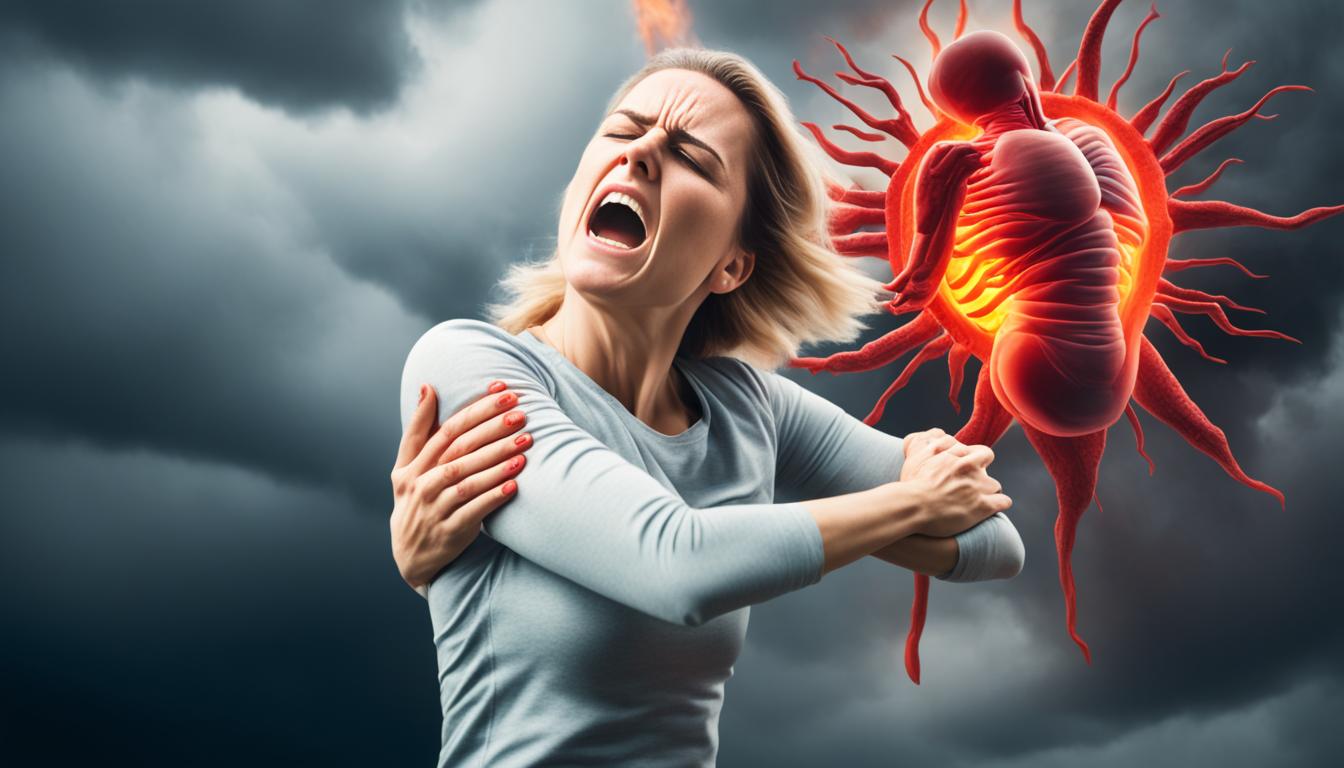Interstitial cystitis is a problem with the bladder that causes a lot of pain. It makes you feel like you need to pee all the time. This condition is tough to manage because we’re not sure what triggers it. It can really lower the quality of someone’s life. Symptoms vary from one person to another.
There are a few ways to help with interstitial cystitis. Medicines can lessen the pain and discomfort. Bladder distention stretches the bladder to help it hold more urine and reduce pain. With bladder training, you try to hold off on using the bathroom longer over time. This can make your bladder stronger. Stem cell therapy is also an option. It’s promising for repairing the bladder and cutting down on inflammation.
Figuring out if you have interstitial cystitis isn’t easy. The signs can be similar to other health issues. Doctors must rule out other problems first. Tests like urine checks and looking inside your bladder can help. Remember, interstitial cystitis affects both men and women, but we see it more in women.
Key Takeaways:
- Interstitial cystitis is a chronic medical condition characterized by inflammation of the bladder lining.
- Symptoms of interstitial cystitis include discomfort, urgency, and frequency of urination.
- Treatment options include medication, bladder distention, bladder training, and stem cell therapy.
- Diagnosis involves ruling out other conditions through urine analysis, urine cultures, and cystoscopy.
- Interstitial cystitis can affect both men and women, but it is more commonly diagnosed in women.
Understanding Interstitial Cystitis: Symptoms and Diagnosis
Interstitial cystitis (IC), also known as bladder pain syndrome, is a long-lasting health issue. It brings a lot of painful symptoms like abdominal pain and the urgent need to pee.
These signs can seem like a bladder infection, making diagnosis hard. Doctors need to rule out other illnesses first before they say it’s IC.
Diagnosis involves talking about the patient’s health, checking them, and doing tests. Tests can include looking at urine, its culture, and peering into the bladder with a cystoscope.
A cystoscope is a thin tool used to look inside the bladder. It checks for inflammation, which might appear red, or tiny bleeding spots.
A correct diagnosis is key to the right treatment. Knowing the symptoms and running the right tests helps doctors choose the best care.
Treating Interstitial Cystitis
Once someone is diagnosed with IC, doctors craft a plan just for them. This can involve changing habits, taking medicine, doing physical therapy, and more.
Common treatments for IC include:
- Pain medication: Nonsteroidal anti-inflammatory drugs (NSAIDs) or other pain relievers are used to soothe pain.
- Bladder instillation: Medication is put right into the bladder with a catheter to reduce swelling and improve symptoms.
- Bladder distention: The bladder is sometimes stretched to reduce symptoms.
- Physical therapy: Exercises that make the pelvic floor muscles stronger and improve bladder control can be helpful.
Seeing a specialist in IC is crucial. They can set up the right treatment for each person.
Causes and Risk Factors of Interstitial Cystitis
The cause of interstitial cystitis is unknown. But scientists have a few ideas. One thought is that a part that protects the bladder can get weak. This lets harmful things in, causing swelling. This can make your bladder hurt and feel like you need to go right now. An autoimmune response, which is the body attacking itself, might also start after a bladder infection. This could be another possible cause.
When bacteria gets into your bladder and grows, it’s called a bladder infection. This can cause your bladder’s inside to get red and swollen. Over time, this swelling can turn into interstitial cystitis. Also, trouble with the muscles and tissues in your pelvis might make it more likely for you to get interstitial cystitis.
The role of genetics in interstitial cystitis is also being studied. Some people may inherit a higher chance of getting this condition. But we need more research to really know how genes are involved.
Summary:
Interstitial cystitis can start because something in your bladder gets weak, after a bad bladder infection, if you have trouble with your pelvis muscles, or maybe because of your genes. All of these things can make your bladder get red and swollen. Then, you might feel pain or have a strong urge to pee. Knowing what leads to interstitial cystitis is key to finding ways to help those with this problem.
| Cause | Risk Factor |
|---|---|
| Glycoaminoglycan layer breakdown | Increased risk of bladder inflammation |
| Autoimmune response | Triggered by previous bladder infection |
| Pelvic floor dysfunction | Increased risk of developing interstitial cystitis |
| Genetic predispositions | Increased susceptibility to interstitial cystitis |
Stem Cell Therapy for Interstitial Cystitis
Stem cell therapy is promising for those with interstitial cystitis. It uses mesenchymal stem cells (MSCs) to heal the bladder and cut inflammation. The main aim is to fix the bladder’s lining and ease swelling.
This therapy puts MSCs right into the bladder. There, they change into bladder cells and let out substances that reduce inflammation. Initial tests show good news, with some patients feeling less pain and having better bladder use after the therapy.
We still need more studies to know for sure how well this treatment works over time. But, by fixing the bladder and calming inflammation, this new approach brings hope to people with interstitial cystitis.

